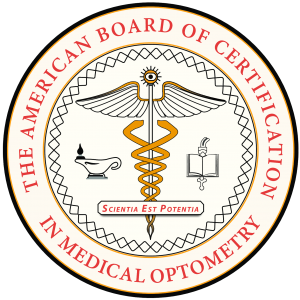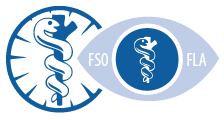
Conditions
Macular Degeneration
Fine Details Lost When Macula Breaks Down
This information was developed by the National Eye Institute to help patients and their families search for general information about age-related macular degeneration. An eye care professional who has examined the patient’s eyes and is familiar with his or her medical history is the best person to answer specific questions.
What You Should Know About Age-Related Macular Degeneration
Perhaps you have just learned that you or a loved one has age-related macular degeneration, also known as AMD. If you are like many people, you probably do not know a lot about the condition or understand what is going on inside your eyes.
This page will give you a general overview of AMD. You will learn about the following:
- Risk factors and symptoms of AMD
- Treatment options
- Low vision services that help people make the most of their remaining eyesight
- Support groups and others who can help
- The aim is to answer your questions and to help relieve some of the anxiety you may be feeling.
What Is AMD?
AMD is a common eye condition among people age 50 and older. It is a leading cause of vision loss in older adults. It gradually destroys the macula, the part of the eye that provides sharp, central vision needed for seeing objects clearly.
In some people, AMD advances so slowly that vision loss does not occur for a long time. In others, the disorder progresses faster and may lead to a loss of vision in one or both eyes. The vision loss makes it difficult to recognize faces, drive a car, read, print, or do close work, such as sewing or fixing things around the house.
Despite the limited vision, AMD does not cause complete blindness. You will be able to see using your side (peripheral) vision.
The Macula
Macular Degeneration Fairbanks AlaskaThe macula is made up of millions of light-sensing cells that provide sharp, detailed central vision. It is the most sensitive part of the retina, which is located at the back of the eye. The retina quickly turns light into electrical signals and then sends these electrical signals to the brain through the optic nerve. Next, the brain translates the electrical signals into images we see. If the macula is damaged, fine points in these images are not clear. The picture is there, but the fine points are lost.
Who Is At Risk?
AMD usually occurs in people who are age 50 and older. As people get older, the risk increases. Other risk factors include the following:
- Smoking. Research shows that smoking increases the risk of AMD two-fold.
- Race. Caucasians are much more likely to get AMD than people of African descent.
- Family history. People with a family history of AMD are at higher risk.
Does lifestyle make a difference?
Some lifestyle choices, like smoking, are linked to AMD although it remains unknown if altering any of these would alter the impact of AMD on an individual. Nevertheless, the following choices may have an impact on AMD and certainly promote healthy living:
- Avoiding smoking
- Exercising
- Maintaining normal blood pressure and cholesterol levels
- Eating a healthy diet rich in green, leafy vegetables and fish
How Is AMD Detected?
The early and intermediate stages of AMD usually start without symptoms. Only a comprehensive dilated eye exam can detect AMD. The eye exam may include the following:
- Visual acuity test. This eye chart measures how well you see at distances.
- Dilated eye exam. Your eye care professional places drops in your eyes to widen or dilate the pupils. This gives him or her a better view of the back of your eye. Using a special magnifying lens, he or she then looks at your retina and optic nerve for signs of AMD and other eye problems.
- Amsler grid. Your eye care professional also may ask you to look at an Amsler grid. Changes in your central vision may cause the lines in the grid to disappear or appear wavy, a sign of AMD.
- Fluorescein angiogram. Your eye care professional may suggest you see an ophthalmologist to perform a fluorescein angiogram. With this test, your doctor injects a dye into your arm. Pictures are taken as the dye passes through the blood vessels in your eye. The test allows your doctor to identify leaking blood vessels and decide the best treatment.
Questions to ask your eye care Professional
It is normal to have questions about AMD.
Below are a few questions you may want to ask your eye care professional. If you do not understand your eye care professional’s responses, ask questions until you do understand.
If you think it would be helpful, ask your eye care professional to write down his or her instructions. Taking notes or getting a friend or family member to take notes is a good way to remember what your eye care professional tells you.
- What is my diagnosis and how do you spell the name of the condition?
- Can my AMD be treated?
- How will this condition affect my vision now and in the future?
- What symptoms should I watch for and how should I notify you if they occur?
- Should I make lifestyle changes?
What Are The Forms Of AMD That Can Cause Vision Loss?
There are two forms of AMD: dry and wet. Either form can advance and cause severe vision loss. Later sections of this booklet describe the different types in greater detail.
The following is a brief description of each:
- The dry form is more common and has three stages-early, intermediate, and advanced. It happens when the light-sensitive cells in the macula slowly break down, gradually blurring central vision in the affected eye.
- The wet form is considered advanced AMD and can be more severe. It happens when new blood vessels under the macula leak blood and fluid. Damage to the macula can occur rapidly.
All people who have the wet form had the dry form first.
Dry AMD
What Is Dry AMD?
Dry AMD is the most common form of AMD in its early or intermediate stages. It occurs in about 90 percent of the people with the condition.
Dry AMD happens when the light-sensitive cells in the macula slowly break down, gradually blurring central vision in the affected eye. As dry AMD progresses, you may see a blurred spot in the center of your vision. Your eye care professional may call this “geographic atrophy.”
Over time, central vision in the affected eye can be slowly lost as less of the macula works.
What Are The Symptoms?
Dry AMD has few symptoms in the early stages. It is important to have your eyes examined regularly before the disease progresses.
In the later stages, blurred vision is the most common symptom of dry AMD. Objects also may not appear to be as bright as they used to be.
As a result, you may have trouble recognizing faces. You may need more light for reading and doing other tasks. Both eyes can have dry AMD or one eye can be affected first.
What Are Drusen?
Drusen are another early sign of dry AMD. They are yellow deposits under the retina. They can be small or large in size.
Your eye care professional can see drusen when he or she examines the retina during a comprehensive dilated eye exam.
Drusen alone do not usually cause vision loss. But people with large drusen are at risk of developing a more severe form of AMD, which results in severe vision loss.
Three Stages Of Dry AMD
Dry AMD has three stages, all occurring in one or both eyes. These stages are defined in part by the size and number of drusen under the retina:
- Early AMD. People with early AMD have either small drusen or a few medium-sized drusen. At this stage, you may not have any symptoms or vision loss.
- Intermediate AMD. People with this stage of AMD have either many medium-sized drusen or one or more large drusen. Many people will have no symptoms, so don’t wait for symptoms to determine if you have an intermediate stage of AMD. Some people see a blurred spot in the center of their vision. They often need more light to read and to do other tasks.
- Advanced dry AMD. In addition to drusen, people with advanced dry AMD have a breakdown of light-sensitive cells supporting tissue in the macula. This breakdown can cause a blurred spot in the center of your vision, often called geographic atrophy. Over time, the blurred spot may get bigger and dark, taking away a larger area of your straight-ahead vision.
Vision loss and dry AMD
If you have vision loss from dry AMD in one eye only, you may not notice any changes in your overall vision. With the other eye seeing clearly, you still can drive, read, and see fine details.
You may notice changes in your vision if dry AMD affects both eyes or if you develop the wet form of the disease. In any case, see an eye care professional for a comprehensive dilated eye exam if blurring occurs in your vision.
Can The Dry Form Turn Into The Wet Form?
All people who have the wet form had the intermediate stage of the dry form first. The dry form also can suddenly turn into the wet form, even during early stage AMD. Eye care professionals have no way to tell if the dry form will turn into the more severe wet form.
Dry AMD can turn into wet AMD at any time. You should get an Amsler grid from your eye care professional to check your vision for signs of wet AMD.
Diet might help
Studies have shown that people who eat a diet rich in green, leafy vegetables and fish have a lower risk of developing AMD.
While there is no definitive proof that changing your diet will reduce your risk of developing AMD or having it progress, to maintain good health in general, there is no reason not to eat a healthy diet, exercise, avoid smoking, and see your healthcare professional regularly.
A Note About Early Stage Dry AMD
Currently, no treatment exists for early stage dry AMD, which in many people shows no symptoms or loss of vision. Your eye care professional may recommend that you get a comprehensive dilated eye exam at least once a year. The exam will help determine if your condition is advancing.
If your condition gets worse, your eye care professional may suggest that you take a specific high-dose supplement that contains antioxidants and zinc. Do not take these high-dose supplements unless your doctor recommends them. Research shows that high doses of specific vitamins and minerals may slow the condition’s progress.
Wet AMD
What Is Wet AMD?
Wet AMD affects about 10 percent of all people with AMD. This type, however, is more severe than the early and intermediate stages of the dry form.
Wet AMD happens when abnormal blood vessels behind the retina start to grow under the macula. These new blood vessels can be fragile and leak blood and fluid. The blood and fluid cause the macula to swell and damage occurs rapidly. The damage may also cause scarring of the retina.
Although loss of central vision can happen quickly, eye care professionals can slow down or stop the progression of wet AMD if it is detected before severe vision loss occurs.
What Are The Symptoms?
During the early stages of wet AMD straight lines may appear wavy. People with wet AMD also may develop a blind spot, which results in the loss of central vision.
If you notice these or other changes to your vision, contact your eye care professional at once. Again, eye care professionals may be able to treat the condition before severe vision loss occurs.
Treatment Options For Wet AMD
With early diagnosis and proper treatment, you can delay the progression of AMD. The earlier it is detected, the better your chances of keeping your vision. Wet AMD typically results in severe vision loss. However, eye care professionals can try different therapies to stop further vision loss. You should remember that the therapies described below are not a cure. The condition may progress even with treatment.
- Intraocular Injections. Currently, the leading option to slow the progression of wet AMD is to inject drugs into your eye. With wet AMD, abnormally high levels of vascular endothelial growth factor (VEGF) are secreted in your eyes. This substance promotes the growth of new abnormal blood vessels. The anti-VEGF injection therapy blocks its effects. If you get this treatment, you may need multiple injections. Your eye care professional may give them monthly. Before each injection, your eye care professional will numb your eye and clean it with antiseptics. To prevent the risk of infection, a doctor may prescribe antibiotic drops. There are three major medications being used for the treatment of wet Macular Degeneration: Avastin (bevicizumab), Lucentis (ranibizumab) and Eylea (aflibercept). All three have been shown to have excellent results in treating wet Macular Degeneration.
Questions to ask about treatment
- What is the treatment for wet AMD?
- When will treatment start and how long will it last?
- What are the benefits of this treatment and how successful is it?
- What are the risks and side effects associated with this treatment and how has this information been gathered?
- Should I avoid certain foods, drugs, or activities while I am undergoing treatment?
- Are other treatments available?
- When should I follow up after treatment?
Advanced AMD
What Is Advanced AMD?
Both the wet form and the advanced dry form are considered advanced AMD. It can occur in the same eye or an eye may have just one form or the other. In most cases, only advanced AMD can cause vision loss.
Additional Risk
People who have advanced AMD in one eye are at especially high risk of developing advanced AMD in the other eye.
However, research has shown that high doses of vitamins and mineral supplements may slow the progression of intermediate AMD to the more advanced stage.
Age-Related Eye Disease Study 2
NEI research found that patients taking high doses of antioxidants and zinc could reduce their risk of developing advanced AMD and experiencing severe vision loss. The findings were based on a 10-year clinical trial called the Age-Related Eye Disease Study (AREDS). Recently, a second study was released which recommended a new formulation which removed beta-carotene and added Lutein in its place.
Because of the recent difficulty in finding the new AREDS2 formula vitamins, Mountain View Eye Center has decided to offer these at the front desk. The price is equal to that of Fred Meyers and coupons are available in the office. These are available to all patients and you do not need to be a patient of Mountain View Eye Center to purchase these vitamins.
What Is The AREDS2 Formulation?
The AREDS formulation is a combination of antioxidants and zinc. The specific daily amounts of antioxidants and zinc tested in the AREDS clinical trial included the following:
- 500 milligrams of vitamin C
- 400 International Units of vitamin E
- 80 milligrams of zinc as zinc oxide
- 2 milligrams of copper as cupric oxide
- 10 milligrams of Lutein
- 2 milligrams of Zeaxanthin
This formulation is commonly taken with meals in the morning and evening in two equally divided doses.
Researchers added copper to the AREDS2 formulation to prevent copper-deficiency anemia. This condition happens in people who take high levels of zinc.
Taking multivitamins
Diet alone will not provide the same high levels of the vitamins and minerals found in the AREDS formulation. Multivitamins also do not contain the same high levels. Multivitamins do contain many important vitamins not found in the AREDS formulation.
Therefore, you may want to take a multivitamin along with the AREDS formulation. If you are already taking daily multivitamins and your doctor suggests you take the high-dose AREDS formulation, be sure you review your vitamin supplements with your eye care professional before you begin.
Who Should Take The AREDS2 Formulation?
The study showed that the formulation was most beneficial for people who had:
- Intermediate AMD in one or both eyes
- Advanced AMD (dry or wet) in one eye, but not the other eye
People with early stage AMD did not benefit from taking the AREDS formulation. Always talk to your doctor before taking any formulation.
A note about the AREDS2 formulation
Researchers stress that the AREDS2 formulation is not a cure. It will not restore vision already lost from the condition. But it may delay the onset of advanced AMD. It also may help people who are at a high risk of developing advanced AMD keep their remaining vision.
Loss Of Vision
Coping with AMD and vision loss can be a traumatic experience. This is especially true of those who have just begun to lose their vision or have low vision. Having low vision means that even with regular glasses, contact lenses, medicine, or surgery, people find everyday tasks difficult to do. Reading the mail, shopping, cooking, seeing the TV, and writing can all seem challenging.
However, help is available. You may not be able to restore your vision, but low vision services can help you make the most of what is remaining. You can continue enjoying friends, family, hobbies, and other interests just as you always have. The key is not delaying use of these services.
What Is Low Vision Rehabilitation?
Low vision rehabilitation is a specialized practice. It usually includes ophthalmologists and optometrists who received special training in low vision services. Specialists in low vision also work as a team with eye care professionals, social workers, vision rehabilitation teachers, and others to help people cope with failing eyesight (see below on the low vision team). The first step in getting services is a low vision examination. It is different from normal eye exams. During this appointment, the specialist in low vision will do the following:
- Examine your medical history and ask questions about your daily routines, hobbies, and goals
- Thoroughly test your vision to make sure current prescriptions work
- Introduce you to low vision devices for seeing objects that are near and distant
- Make referrals for additional services, such as counseling and support groups
By testing your vision and asking questions, the team is better able to choose a low vision device that would work best for you. Training can take place at the specialist’s office, or a specialist will schedule a visit to set up and demonstrate equipment in your home. While there, he or she may evaluate lighting, mark appliances, and look for safety problems.
The low vision team
- Specialist in Low Vision-An ophthalmologist or optometrist who is trained to evaluate and treat low vision.
- Occupational Therapist-A licensed professional who teaches you how to use low vision devices.
- Rehabilitation Teacher-An educator who teaches you different ways to handle the demands of daily living.
- Orientation and Mobility (O&M) Professional-A professional who specializes in technologies that enable safe travel.
- Social Worker-A professional who helps you cope with vision loss and emotional stress.
- Technology Specialist or Adaptive Technology Specialist-A professional who is an expert in assistive and adaptive devices.
Where To Go For Services
Mountain View Eye Center has recently started a Low Vision Clinic in associated with Susan Guritz, OT. Susan is an occupational therapist who is specializing in low vision rehabilitation. She offers a comprehensive approach to low vision therapy including home visits and individualized instruction.
What Are Some Low Vision Devices?
Because low vision varies from person to person, specialists have different tools to help patients deal with vision loss.
They include the following:
- Reading glasses with high-powered lenses
- Handheld magnifiers
- Video magnifiers
- Computers with large-print and speech-output systems
- Large-print reading materials
- Talking watches, clocks, and calculators
Computer Aids And Other Technologies
Today, computers are helping people with low vision with reading and writing. New technology can increase text size on computer screens and allow computers to read what appears on the screen. People with low vision also are benefiting from scan-to-read devices, note takers, and other advanced technologies.
Questions to ask your eye care professional about low vision
- How can I continue my normal, routine activities?
- Are there resources to help me?
- Will any special devices help me with reading, cooking, or fixing things around the house?
- What training is available to me?
- Where can I find individual or group support to cope with my vision loss?
Coping With AMD
AMD and vision loss can profoundly affect your life. This is especially true if you lose your vision rapidly. Even if you experience gradual vision loss, you may not be able to live your life the way you used to. These changes may force you to quit your job or cut back on volunteer and recreational activities. Your relationships with loved ones and friends may change. These changes can contribute to feelings of loss, lowered self-esteem, isolation, and despair. You may worry that you will become a “burden” on loved ones and friends. You may even go into denial and hide the fact that you have AMD.
These are natural reactions. Millions of people who suffer from AMD have these feelings as they try to adjust to their diagnosis and vision loss. However, support is available to help you maintain a fulfilling life.
AMD And Depression
Given the changes, it is not surprising that some people who have AMD also experience depression.
Depression is more than just anger or sadness related to having AMD. It is a disease in its own right. Symptoms can last weeks or months. If untreated, it can worsen other health problems or lead to thoughts of suicide. Sadly, depression is the leading cause of suicide among older people.
While depression is a serious disease, it can be treated. You should never accept it as a “normal” consequence of having AMD or getting older. Always remember that help is available. You do not have to face vision loss alone.
Signs of depression
- Constant feelings of sadness, anxiety, or emptiness
- Loss of interest in hobbies or activities that were once enjoyable
- Decreased energy
- Difficulty concentrating, remembering, making decisions
- Weight loss or gain
- Thoughts of death or suicide, suicide attempts
- Restlessness, irritability
- Persistent physical symptoms that do not respond to treatment, such as headaches, stomach disorders, and chronic pain
Engaging Family And Friends
Family and friends are important sources of support. But do not feel bad if the people you love most have trouble facing your vision loss. They, too, may need time to adjust to your diagnosis.
They, too, may be having feelings of shock, helplessness, and even anger. After all, it is natural that anything that greatly affects you will also affect them. They may need to make their own adjustments.
Let them know that they can help simply by being themselves.
They can offer comfort by listening and not by feeling they have to solve your problems. Tell them it is alright to ask questions or to talk about how they feel. Remind them that you are the same person you always were.
Coming to terms with the diagnosis and making the most of your remaining vision are the keys to living a fulfilling life. Your family and friends can be important resources as you adjust to living with AMD.
How to take control
The key to leading a rewarding life-despite vision loss-is taking control of the things you can. You can begin by doing the following:
- Learning more about your vision loss
- Understanding the grieving process
- Seeking counseling to cope with feelings of loneliness, helplessness, anxiety, and depression
- Visiting a specialist in low vision and getting devices and learning skills to help you with the tasks of everyday living
- Trying to stay positive. People who remain hopeful say they are better able to cope with the condition and vision loss
Professional Counseling
Sometimes it is hard talking with loved ones. If you are feeling depressed and need to talk with someone, talk with your eye care professional or your regular doctor. He or she can refer you to a therapist who can talk with you about your feelings and may give you medicine that will help you feel less anxious and sad.
State agencies and nonprofit organizations also offer counseling services for those with vision loss and can provide referrals to other professionals based on individual needs.
Just taking the first step and deciding to get treatment can make all the difference.
Support Groups
Some people find support groups very helpful. In a support group, people may talk about their feelings and what they are going through. They may share advice or help others who are dealing with the same issues. These groups typically meet in person or talk online.
People who attend these meetings say they often feel better about themselves. They find a new life focus. They make new friends. This helps them to cope better with AMD.
If you do not feel comfortable talking in front of a crowd, you might think about finding another person who has AMD.
The chance to talk with someone who understands your feelings can help you feel less alone and more hopeful about the future.
Information For Family Members
Shock, disbelief, depression, and anger are common reactions among people who are diagnosed with AMD. These feelings can last for days, weeks, months, or even years. This can be upsetting to family members and caregivers who are trying to be as caring and supportive as possible.
Following are some ideas family members might consider:
- Obtain as much information as possible about AMD and how it affects sight.
- Share the information with the person who has AMD.
- Find support groups and other resources within the community.
- Encourage family and friends to visit and support the person with AMD.
- Allow for grieving. This is a natural process.
- Lend support by “being there.”
- Encourage evaluation from a Low Vision specialist.
Request An Appointment
Simply fill out this form and we will get back to you shortly.








